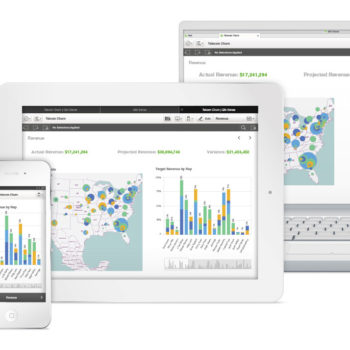APAC Retailers Look at In-store Data to Understand Why Customers Aren't Buying

Retailers looking to understand why customers choose not to purchase certain products should analyse in-store data to identify potential association and tap analytics to complement their own experience.
Consumers today have more options and means to get what they need, so businesses have to get better at knowing what their customers want, said Jeremy Sim, global director of manufacturing and high tech at Qlik, which develops data intelligence and visualisation software.
Retailers in Asia-Pacific are starting to recognise the importance of doing so, Sim noted, pointing to a shift in focus towards "non-customers" and efforts to understand why consumers choose other brands over theirs.
Increasing online activities also have put more pressure on logistics and the need for supply chains to be more agile. Retailers are realising they have to meet growing expectations to deliver to customers' homes, whilst at the same time trying to keep their inventory lean, he told RetailTechNews.
Furthermore, physical stores now no longer serve simply as a place for consumers to visit, but also as a hub from which customers can obtain information about a brand's products and services. These outlets also provide a way for retailers to extract data about their customers, so they can offer a more tailored shopping experience, whether in-store or online.
Sim said: "Businesses today face fundamental challenges of trying to understand how to bring in customers [to their store] and ensure a constant in-flow stream of revenue. They also need to improve shopping experiences for customers, as well as find ways to attract non-customers into their store and to buy their products."
With the role of data already recognised as essential, he said organisations now struggle to extract real value from all the data they have on hand, including sales information from POS (point-of-sales) systems and CRM (customer relationship management) and loyalty programmes.

Jeremy Sim, Global Director of Manufacturing & High Tech, Qlik
He noted that there is a common misconception that, with big data, the volume of data matters most. However, size alone is not adequate, he explained. Companies also must be able to find meaningful association and correlation between the different datasets.
A hotpot restaurant chain in China, for instance, discovered that most of its customers tended to congregate towards two outlets, which prompted the company to tweak its marketing and offer promotions at specific locations, during specific days of the week. Gaining such insights across its datasets allowed the restaurant operator to indirectly influence its customers to move between its outlets and, in the process, better distribute demand and sales across its chain.
The data also enabled the company to better manage its supply chain and ensure it had sufficient inventory to support high demand for specific products, Sim said. He added that the restaurant operator also analysed customer queues as well as order and service times to identify bottlenecks, so it could resolve inefficiencies – whether these were in the service line or kitchen.
Physical experience still important
And despite the move towards online platforms, brick-and-mortar stores still have a place in the retail landscape.
Sim said: "You will never move away from the comfort or need of having a storefront. If I were a retailer, I would want to have a multi-channel approach to my business." He pointed to brands such as Uniqlo that have both physical and online stores.
He noted that visual data captured in-store also could be tapped to better understand customer needs and identify potential reasons why some chose not to purchase any products. Data from cameras could further provide insights on consumers who walked past without entering the store, for instance, by analysing their profile.
He added that in-store foot traffic could reveal insights on how long customers lingered around certain shelves or aisles.
Noting that retailers were sitting on a "goldmine of data", he urged these companies to adopt analytics tools to gain better visibility across different facets of their business, including sales, customers, and inventory. They need to transition beyond basic data reporting tools, he said, adding that he saw this as the biggest challenge amongst Asia-Pacific retailers today.
According to Sim, recalcitrant retailers were adamant their experience alone was sufficient. "We're trying to encourage them to complement this experience with analytics", he said.
He related how a convenience store in Japan noticed a spike in sales of yoghurt in the afternoon and proceeded to place bread in the same vicinity. It had assumed the two products were complementary breakfast items and would help push the sales of bread alongside yoghurt.
Upon analysing the store's CRM and POS data, it found out that several female shoppers in their 30s who were purchasing the yoghurt also were buying fruit granola. Granola products then were placed beside yoghurt and this led to an increase in sales of the former.
Even the size of shopping baskets could affect the sales of certain products. In markets where real estate might be a premium and store size small, customers might not want to navigate the small aisles with shopping baskets.
Sim explained: "We analyse segmentation based on receipts and found two distinct segments based on the size of basket: big items such as shampoo, and smaller items that were carried by hand. So, the store started using smaller baskets and spending on those smaller items increased.
"So, with a little more data, you can truly transform sales."This content was originally published in RetailTechNews.
Customer ExperienceDataE-CommerceIn-storeOmnichannelPersonalisation








Follow ExchangeWire